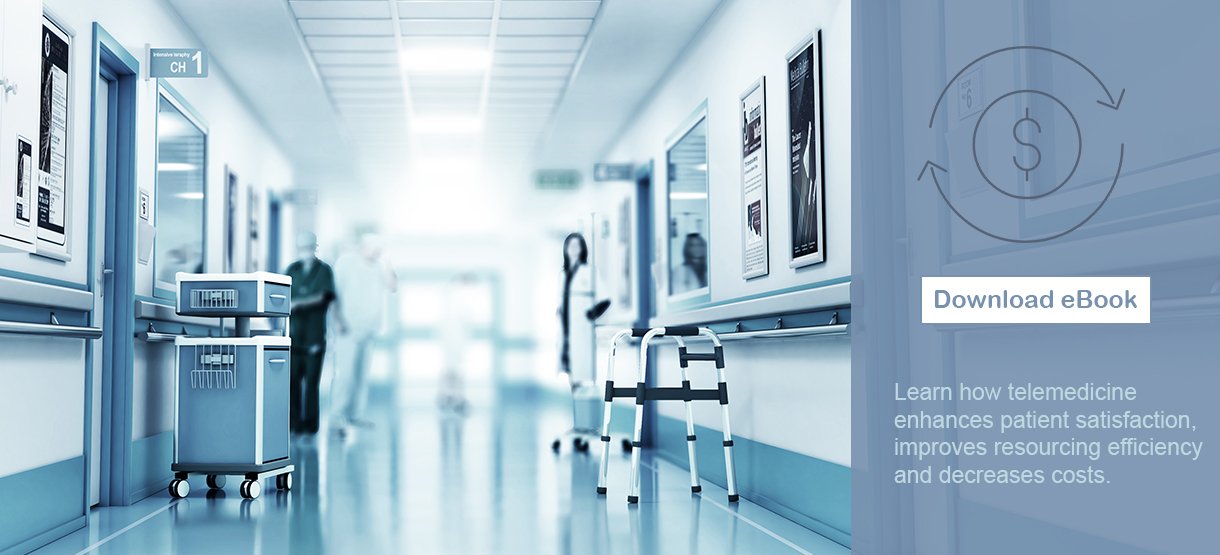Download eBook:
ROI Guide for Telemedicine in Post-Acute Care
Learn Everything You Need to Know
About Telemedicine in Post Acute Care
The pandemic changed the way post acute and long-term care facilities utilize technology. The popularity of telemedicine elevated by 154% in the last week of March 2020 alone, with many practices and health care organizations introducing — and continuing to pursue — opportunities in telehealth based not only on the state of the pandemic, but also on the popularity telemedicine gained because of its convenience without sparing quality of care.
But what does the future hold for telemedicine in SNFs? When we think directly about the years to come, our aging population has encouraged care facilities to pay closer attention to the ability to maintain care across skilled nursing facilities, rehabilitation and therapy centers, transitional care organizations and post acute care provider practices. Over time, telemedicine has proven its ability to change the way we think about care settings and the care continuum, but the same idea has been in the mind of many for years. Telehealth is revolutionizing patient care and will continue to do with future advancements, as discussed by speakers at the Advanced Topics for Oncology Pharmacy Professionals Summit:
“The model of ‘connected health’ — a new paradigm of care — promises to reduce costs and improve quality by working with clients proactively. … The demand for telemedicine services is expected to grow exponentially as baby boomers age, and home-based care will likely continue its exponential growth as a means to help keep older patients in their own homes and better manage their conditions. Demands for quality, patient safety and more options will help change the reimbursement picture and open the door for more telemedicine applications, new technologies will emerge to meet this need, and the use of existing measures, such as biometric authentication, will become more common.”
In our latest eBook, we take a look at the specific impact telemedicine will have on the world of post acute care, the importance of treating patients in place and how AMD is making a major difference in this space.
How can telemedicine change the world of post acute care?
According to a study by the U.S. Department of Health and Human Services, volumes involving post acute care patients were on the decline during the height of the pandemic. This is because many facilities were canceling elective surgeries and encouraging people to avoid non-urgent admissions to hospitals and other care facilities based on CDC recommendations to stop the potential spread of COVID-19. Ultimately, this had an impact on revenue loss for many hospitals, based on the fact that spending and care facility utilization decreased by about 40%.
Figuring out a way to cope with the changes brought on by the pandemic could not be a second thought — due to the declining trends hospitals were seeing, they needed to act fast in the face of defeat. This is where telemedicine became the shining star of the show, taking center stage as an opportunity for patients to continue receiving the care they needed without jeopardizing their own health and that of those around them.


The financial impact of telemedicine. Billable services, increased referrals and reimbursement for high-acuity patients are just a few of the ways telemedicine can generate revenue within a care setting on its own.

Opportunities for improved health. Quality care should always be the bottom line. When post acute care services leverage virtual visits and telehealth, patients can be seen in place and avoid the common barriers that keep them from receiving treatment for an acute illness.

Patient satisfaction. Better patient care means happier patients. Avoiding hospital readmission is just one of the many ways patients (and providers) can be satisfied with improved care over time.
While hospitals and other care facilities felt the impact and defeat of the pandemic, telemedicine may have been the silver lining.
The importance of treatment in place
When telemedicine is brought into skilled nursing care or acute illness settings, the benefits range widely for both the patient and post acute care provider. Two of the biggest barriers in care, time and distance, are broken down by the ability to connect with a patient from afar at nearly any given moment.
Productivity levels are improved by care facility staff, as they have more time and resources available to focus on interacting with patients in need, providing that virtual face-to-face connection that makes a major difference throughout the care journey.
The AMD Global Telemedicine difference
Committing to telemedicine and telehealth use in your acute care facility is the first step. Finding telehealth technology that’s specifically designed for patient treatment in SNFs is the leverage you need to set your organization apart from the rest. With better digital tools at your disposal, you can provide a different level of care and support that meets patient wants, needs and expectations. In the end, this can give you the confidence and collateral to better diagnose patients and say no to avoidable readmissions once and for all.
When physicians are in a position to meet with each patient on demand, they are better equipped to treat and access patients from the moment something goes wrong. Immediate clinical assessment means patients get the care they need when they need it, and your facility doesn’t have to worry about rehospitalization, patient transport and overall dissatisfaction with your organization from patients and family members alike.
AMD Global Telemedicine is well equipped to help you find the ideal telemedicine technology that fits the needs of your facility. With 30 years of experience in the telehealth space and a reputation as an industry leader, AMD has continually honed in on breaking barriers between healthcare providers and patients, no matter the type of care needed.
We stand behind our products and services that focus on solving common issues involved with caring from a distance, such as time, location and inconvenience. With a tailor-made telemedicine solution from AMD, we can help your SNF improve clinical outcomes, enhance patient satisfaction rates and focus on the positive impact of your bottom line.
Interested in learning more about our technology?
Contact us today for support and don’t forget to read our eBook, “ROI Guide for Telemedicine in Post-Acute Care” for an inside look at the impact telehealth solutions can have on post acute care providers.


